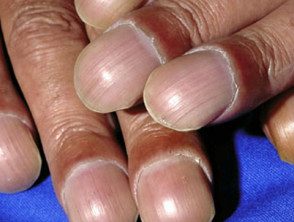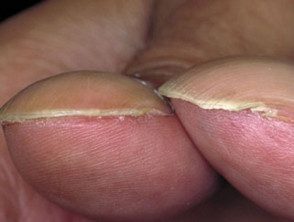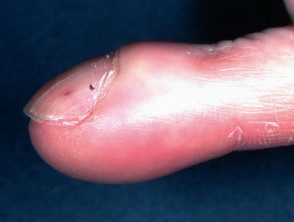What is it hypertrophic osteoarthropathy?
Hypertrophic osteoarthropathy is a disease of the joints and bones. It is characterized by tapping of the fingers and toes, enlarged extremities, and painful, swollen joints. The disease is divided into 2 categories:
- Primary hypertrophic osteoarthropathy
- Secondary hypertrophic osteoarthropathy.
Primary hypertrophic osteoarthropathy is a rare inherited condition. In most cases, it develops over a period of time and is essentially symptomless. Initial visits to doctors are usually for minor pain in the shoulders and hands.
Patients with secondary hypertrophic osteoarthropathy usually complain of pain and swelling in the joints and long bones, and tapping of the fingers. Symptoms occur suddenly and progress rapidly. Approximately 90% of these cases have an underlying malignancy; the rest do not haveevil one chronic diseases of the lungs, liver or heart.
Features of secondary hypertrophic osteoarthropathy include:
- Clubbing – skin around nail can be red and tender
- Skin thickening
- Thickening of the tubular bones
- Periostosis (this is abnormal statement of bone around the outside of a bone), which may be asymptomatic or may cause intense burning and deep pain in the extremities
- Swelling of large joints that causes pain and limited movement.
Clubbing



Who gets it and what causes hypertrophic osteoarthropathy?
Primary hypertrophic osteoarthropathy is rare hereditary condition.
Secondary hypertrophic osteoarthropathy is most frequently associated with internal malignancy or chronic disease. Peripheral non-small cell lung Cancer It is the malignant neoplasm most commonly associated in patients with secondary hypertrophic osteoarthropathy. The underlying neoplasm or disease usually appears first, although in some cases the symptoms of hypertrophic osteoarthropathy have preceded the underlying disorder by more than a year.
The actual cause of hypertrophic osteoarthropathy remains unclear. Estrogens, circulating factors, neurogenic All factors and growth hormone are believed to play an important role.
Diseases associated with nightclubs.
Clubbing may also be seen as an isolated abnormality in patients with lung and/or heart disease, and rarely gastrointestinal disease, hyperthyroidism and other diseases. Examples include:
- Lung/heart diseases (80–90%): cancer, abscess, interstitial pulmonary fibrosissarcoidosis congenital heart disease, beryllium poisoning, pulmonary arteriovenous fistulasubacute bacterial endocarditis, infected arterial grafts aortic aneurysm
- Gastrointestinal disease (5%): inflammatory intestinal disease, trough, cancer, liver cirrhosisachalasia
- Hyperthyroidism (1%, known as thyroid clubbing), thyroid cancer
- Palmoplantar keratoderma
How is clubbing recognized?
To determine if there are clubs, flex the fingers of both hands. Bring your index fingers together until distal The phalanges touch. A diamond gap between them (Schamroth's window) means that the nails are not struck (Schamroth's sign)
Schamroth sign

Schamroth window
Clubbing is associated with:
- Soft and fluffy nail bed
- Reduction or loss of the Lovibond angle between the nail bed and the nail fold
- Increased convexity of the nail fold
- Thickening of the fingertip
How is hypertrophic osteoarthropathy diagnosed?
Hypertrophic osteoarthropathy is diagnosed by the presence of nails in the nails associated with radiological signs on simple x-ray.
What is the treatment for hypertrophic osteoarthropathy and clubbing?
The primary goal of treatment for secondary hypertrophic osteoarthropathy is the treatment of the underlying malignancy or chronic disease. Elimination of the underlying. tumor It generally produces spontaneous improvement of bone and joint symptoms within 2-4 weeks. Clubbing is unlikely to be reversed if substantial chronic tissue changes occur, including an increase collagen deposition, have occurred. non-steroidal anti-inflammatory Medications may be helpful in relieving painful osteoarthropathy.
Treatment of isolated clubbing is the underlying cause.

